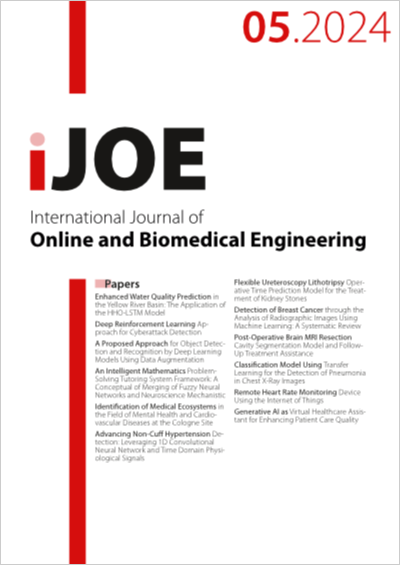An Intelligent Mathematics Problem-Solving Tutoring System Framework
A Conceptual of Merging of Fuzzy Neural Networks and Neuroscience Mechanistic
DOI:
https://doi.org/10.3991/ijoe.v20i05.47793Keywords:
mathematics, problem-solving, neuroscience mechanistic, fuzzy neural networks, intelligent tutoring system, deep learningAbstract
This study proposed a novel framework for redesigning problem-solving activities in an intelligent tutoring system (ITS) called the intelligent neural-mechanistic mathematics problem- solving tutoring system (IN-MP-STS). This concept paper presents a new approach to ITS by incorporating elements of neuroscience mechanisms as a learning strategy that focuses on optimizing the brain’s ability through neural mechanisms. It also introduces fuzzy neural networks (FNNs) as a tool for modulating assessment and analyzing outcomes. This framework offers an alternative perspective on delivery methods and learning approaches in the ITS module. By effectively integrating neuroscience mechanistic elements such as motivation, activation, regulation, execution, memorization, and interactivities, deep learning can be achieved, leading to improved student competence. This framework also proposes an adaptive assessment component based on FNNs, which will enhance the measurement and feedback modules in the system. It is necessary to modify the way that ITS and soft computing methods, such as the study of neural networks (NNs), are combined to make learning measurement and assessment more transparent. This innovation has not been fully disclosed, so researchers are encouraged to further test the concepts presented to assess their alignment with the existing system and ethical considerations. This framework enhances the conceptual research findings of FNNs and incorporates neuroscience-based strategies into architecture and autonomous problem-solving skills within an ITS model. It also offers references for the development of problem-solving learning. IN-MP-STS has the potential to significantly enhance students’ competencies and abilities, thereby fostering the development of more comprehensive, holistic, and sustainable ITS. This approach also has the potential to enrich the existing literature on the sustainability of neural networks.
Downloads
Published
How to Cite
Issue
Section
License
Copyright (c) 2024 Mohamad Ariffin Abu Bakar, Ahmad Termimi Ab Ghani, Mohd Lazim Abdullah

This work is licensed under a Creative Commons Attribution 4.0 International License.



